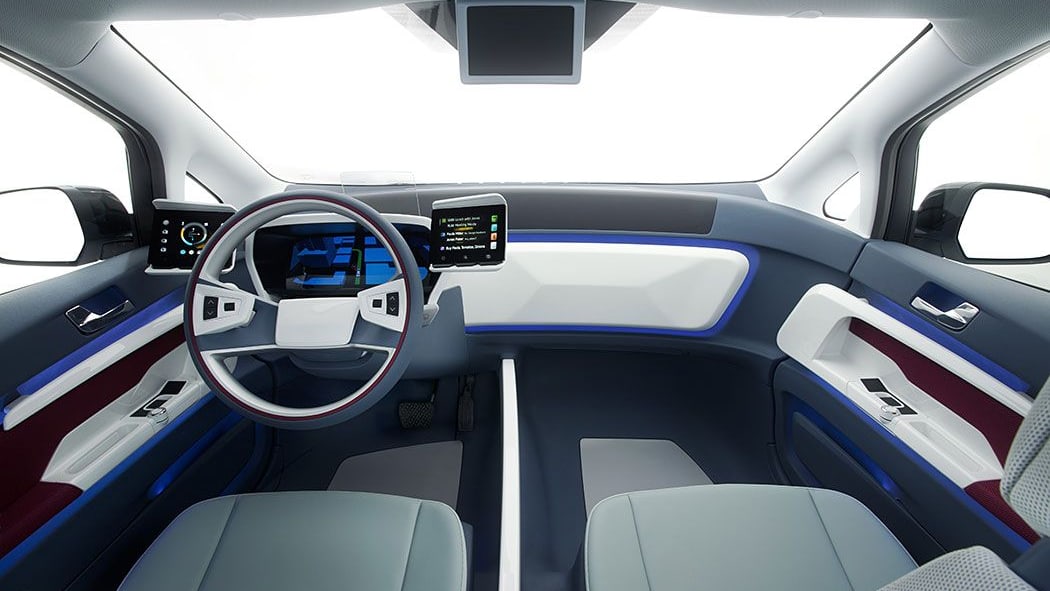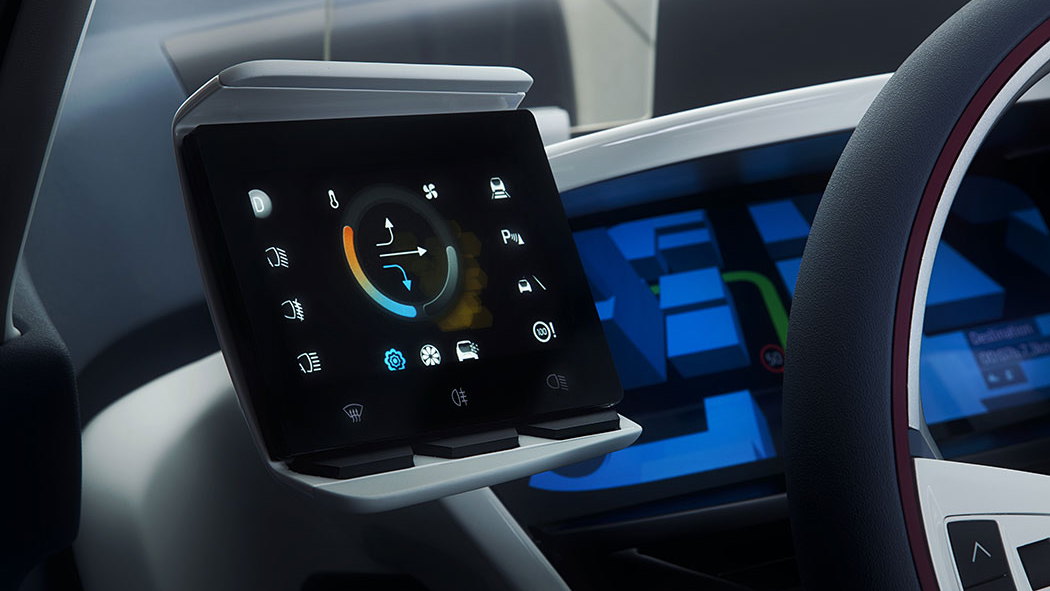However, the electric drivetrain is only one part of the Visteon e-Bee concept.
Instead, it's designed to showcase technology we could see on cars within the next decade, and is focused on the different ways we may be using cars by 2020.
The company says it demonstrates 'intelligent mobility', gathering and disseminating useful driver-related data as part of a wider mobility network.
The exterior is all clearly standard Leaf, save for a snazzy paint scheme--but inside, it's very different from Nissan's production electric car.
More cabin space through downsized components
Part of that is down to a new heating and ventilation system. Visteon has liberated a great deal more space in the cabin by re-thinking the position of the climate control system. An integrated module combines the heating, ventilation and air-conditioning (HVAC) unit with the refrigerant system and heat pump.
This moves it out of the cabin--normally taking up a large amount of space within the dashboard--allowing Visteon to liberate substantial amounts of cabin room. Passengers even have their own individual controls, allowing different settings on different sides of the cabin.
The driver is granted a new, three-display interface, too. One displays journey information, while small touch-screens on either side of the steering wheel are used to interact with the vehicle controls and social connections. These screens can be personalized from driver to driver, depending on individual needs.
A 180-degree rear-view display replaces the traditional rear-view mirror, and a projected display features typical basic driving information, such as speed.
Uniquely, further space has been found by mounting airbags in the headliner, and sustainable recycled materials cover the e-Bee's interior.
Textured surfaces are created with laser-etching rather than forming--theoretically, every car's interior could be different without having to re-tool.
Indeed, the entire interior itself could be different depending on the needs of the market and individual. "Physical app" modules can be installed throughout, each having a different purpose.
On a road near you in 2020...
The e-Bee has been created to explore new and alternative ways of using a vehicle, including car-sharing, private ownership and short-term rental.
Some of the technology on show is a while away yet, but Visteon is showing the concept at the Electronica trade fair in Munich.
The e-Bee shows what could be possible even with existing vehicle designs--and the potential for reducing weight and improving materials sustainability is impressive.
+++++++++++
















